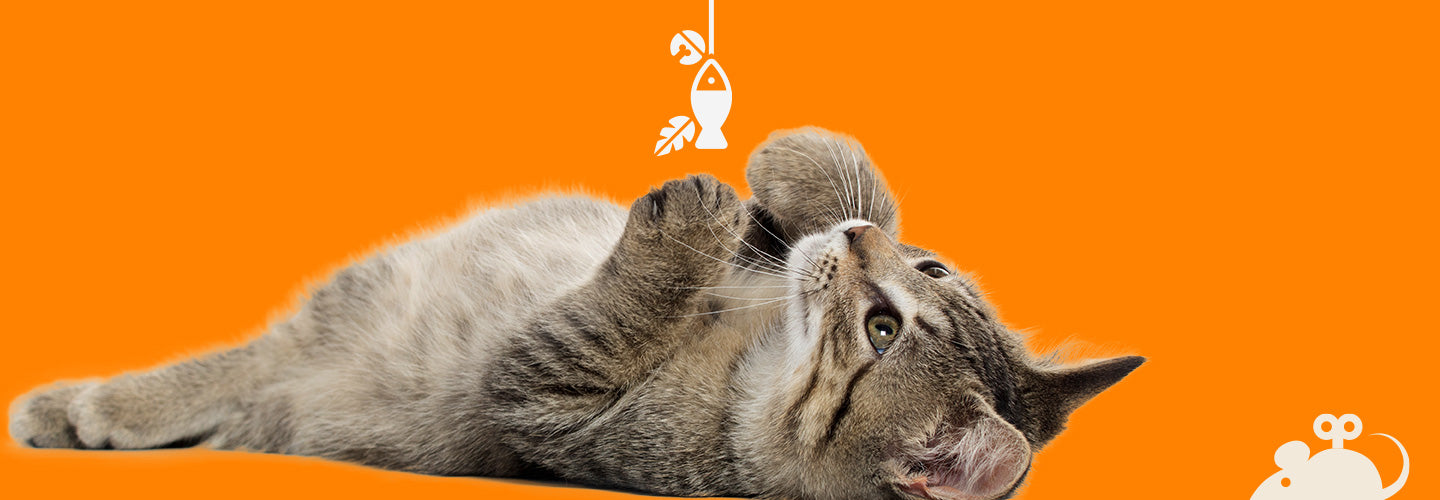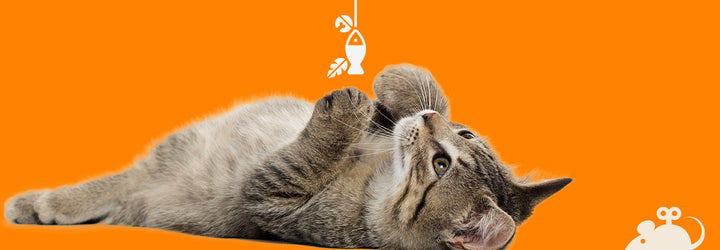

Posted by Emma Oldroyd, on
Cat Focus: Toilet Behaviour
Indoor, re-located or poorly cats are going to be the main user of a litter tray.
Selecting the correct tray and litter is a very important decision when addressing this situation.
The Do-Do’s and Do-Do Not’s:
DO:
- Scoop the litter tray twice daily – at a minimum.
- Keep the litter deep enough for the cat to naturally dig.
- Use appropriately sized litter tray.
-
Place your litter tray in a quiet area.
DO NOT:
- Use clumping litter for kittens younger than 6-7 weeks of age.
- Punish your cat for not using the litter tray – there could be a medical condition!
- Clean a litter tray if you are pregnant.
- Allow a child to oversee litter tray maintenance.
Why do Cats pee & poop outside their litter tray?
- “Dirty” litter tray – a cat’s sense of smell is more sensitive to that of ours! Plus, they have an instinct to be clean.
- Choice of litter.
- Size of litter tray - too small.
- Location of litter tray(s).
-
Multi-Cat Households:
- Not enough litter trays available.
- Dominate cat blocking use.
- Medical issues – seek Veterinary help.
How often should I empty a litter tray?
The same principle should be used when a human uses a toilet – we flush every time – so clean it when the cat uses it! And after all who wants to be walking on their wee and poop?
Regular checks on your litter tray will help reduce odours and help promote cat health and wellbeing.
What type of litter should you use?

There is a huge variety of litter brands and types out there, each with their own advantages and disadvantages.
It’s important to consider which type will best suit your arrangements and the needs of your cat.
There are three main types of cat litter available:
Clumping Litter
These usually include sodium bentonite, a type of clay that expands and forms hard clumps when wet.
Advantages:
- Absorbs fluids well.
- Easy to scoop out solids and soiled litter – and if done regularly, the untouched litter in the tray will last a bit longer and unpleasant odours will be reduced!
- Pieces that stray over the side of the litter tray are easy to see and sweep up, and don't tend to tread into the carpet.
- Relatively inexpensive.
- Most cats like this type of litter.
Disadvantages:
- Very heavy and large 'economic' bags are hard to carry.
- Possible clouds of clay dust when changing the litter, which could be a problem if you or your cat are asthmatic or have any respiratory problems.
- Tends to stick to paws, which causes treading round the house, and may not be good for small kittens if they swallow any granule.
- Isn’t biodegradable or flushable.
An exception to this rule is a product called World's Best Cat Litter which is made from corn meal.
Advantages:
- Naturally good smelling without being scented.
- Virtually dust free.
- Biodegradable and flushable.
- Not as dense as clay, so easier to scoop.
- Long-lasting due to its tight clumps.
Disadvantages:
- Expensive in comparison to its Clay counterpart.
Non-Clumping litter
Usually small pellets made from compressed sawdust or recycled newspaper
Advantages:
- Environmentally friendly from renewable sources
- Large bags are relatively light to carry
- Solid waste is easy to remove
Disadvantages:
- Wet sawdust tends to disintegrate quickly and is easily trodden into carpets and around the furniture
- Although many manufacturers claim their products are biodegradable and suitable as garden compost, the high level of acidity in cat urine is not good for plants - this will not be a problem in commercial composting sites where the higher temperatures will deal with the problem
- Can be quite 'smelly' - essential to clear any waste as soon as it appears.
Silica Gel Litter
The newest variety, AKA 'Crystal Litter', is a porous sodium silicate in the form of clear granular particles.
Advantages:
- very high fluid absorbency (though solids still need to be removed)
- good odour elimination
- the crystals turn yellow when they are saturated, indicating the need for a completely fresh supply of litter in the tray
- doesn't tend to tread into the furnishings like some other litter
- lightweight - a little goes a long way so no need to carry large heavy bags
Disadvantages:
- very expensive
- some cats don't like it as it can feel sharp on their feet
Shop our entire range of cat litter & litter trays online.
Types of Litter Trays to use
There are a variety of litter tray designs on the market.
Some cats like trays with hoods or lids, which are effective in minimising the spread of odours, especially if you are out all day or it’s a warm day.
Other cats will not use enclosed trays at all, and you may need to experiment a bit when you first get your cat.
Small kittens need a low tray that they can get in and out of easily and can only progress to the larger more elaborate designs as they grow larger.
Positioning of Litter Tray
Litter trays are often positioned in the kitchen, but it's better to put them in the utility room, bathroom or maybe the conservatory if you have one, as there will be inevitable strong smells from time to time and hygiene matters.
This would also combat any external factors that can stress cats when using the tray, such as the tray being by a window where they could possibly see another neighbourhood cat outside. Cats like to toilet in privacy and need to feel safe in the tray.
How much litter do I use?
3-4 inches of litter in a suitable tray should be enough for your cat to dig happily.
Remember when removing waste that you should top up the litter to maintain this happy depth.
How many Litter trays do I need and what size should the tray be?
A golden rule is 1 ½ trays to every cat in your household.
So, in theory 2 cats = 3 litter trays. However, this all depends on your litter tray size!
The size of your tray is all dependant on your cat length. Your litter tray must be 1.5 times bigger than your cat.